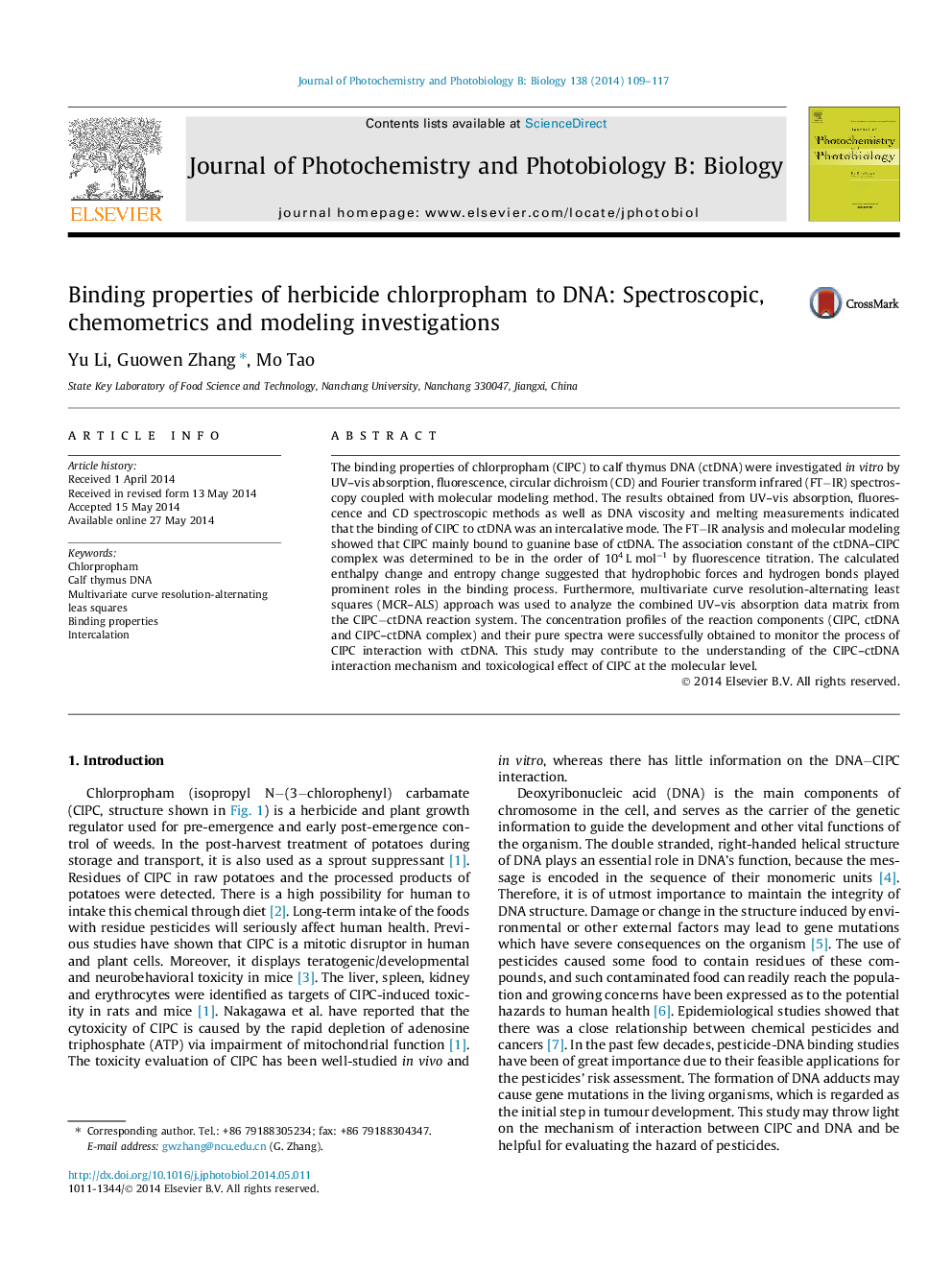| Article ID | Journal | Published Year | Pages | File Type |
|---|---|---|---|---|
| 30288 | Journal of Photochemistry and Photobiology B: Biology | 2014 | 9 Pages |
•The binding process of chlorpropham with ctDNA was monitored by MCR−ALS approach.•The binding mode of chlorpropham to ctDNA is an intercalation binding.•Hydrophobic interactions and hydrogen bonds are the major binding forces.•The molecular simulation docking illustrated the specific binding.
The binding properties of chlorpropham (CIPC) to calf thymus DNA (ctDNA) were investigated in vitro by UV–vis absorption, fluorescence, circular dichroism (CD) and Fourier transform infrared (FT−IR) spectroscopy coupled with molecular modeling method. The results obtained from UV–vis absorption, fluorescence and CD spectroscopic methods as well as DNA viscosity and melting measurements indicated that the binding of CIPC to ctDNA was an intercalative mode. The FT−IR analysis and molecular modeling showed that CIPC mainly bound to guanine base of ctDNA. The association constant of the ctDNA–CIPC complex was determined to be in the order of 104 L mol−1 by fluorescence titration. The calculated enthalpy change and entropy change suggested that hydrophobic forces and hydrogen bonds played prominent roles in the binding process. Furthermore, multivariate curve resolution-alternating least squares (MCR–ALS) approach was used to analyze the combined UV–vis absorption data matrix from the CIPC−ctDNA reaction system. The concentration profiles of the reaction components (CIPC, ctDNA and CIPC–ctDNA complex) and their pure spectra were successfully obtained to monitor the process of CIPC interaction with ctDNA. This study may contribute to the understanding of the CIPC–ctDNA interaction mechanism and toxicological effect of CIPC at the molecular level.
Graphical abstractFigure optionsDownload full-size imageDownload as PowerPoint slide
